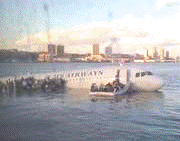Bird Strike Committee Proceedings

Bird Strike Committee-USA/Canada Joint Annual Meeting: 10th (2008)
Date of this Version
2009
Document Type
Article
Abstract
Florida harbors numerous bird and mammal species because of its rich diversity of both natural and man-made habitats that provide ample food, water, and cover throughout the year. This diversity has led to numerous wildlife/aircraft strikes resulting in significant monetary losses for the U.S. Air Force (USAF). Despite diminishing budgets, recurrent turnover of base personnel,, and shifting priorities, Wildlife Services has worked successfully with USAF personnel to develop a heightened awareness of BASH issues and effective, proactive BASH programs at three air bases in Florida. Emphasizing the use of accurate data along with proper analysis to form science-based recommendations facilitates collective efforts from members of the Bird Hazard Working Group (BHWG), which promotes a cooperative climate for success. As a result of data collected during comprehensive wildlife hazard assessments, Integrated Wildlife Hazard Management Plans (IWHMP) have been developed and implemented.. The IWDMP consists of three approaches: (i) management of the resources being negatively affected (ii) management of wildlife associated with the damage and (iii) physical separation of the two. While some of the methods described here are unique to the Florida programs, most are applicable elsewhere. This presentation outlines the successes and learning experiences of the BASH programs at Eglin, Tyndall, and Homestead Air Force Bases.


Comments
Abstract of paper presented at Bird Strike Committee USA/Canada Meeting, Lake Mary and Sanford, Florida, August 18–21, 2008.